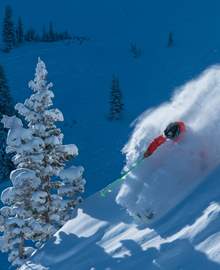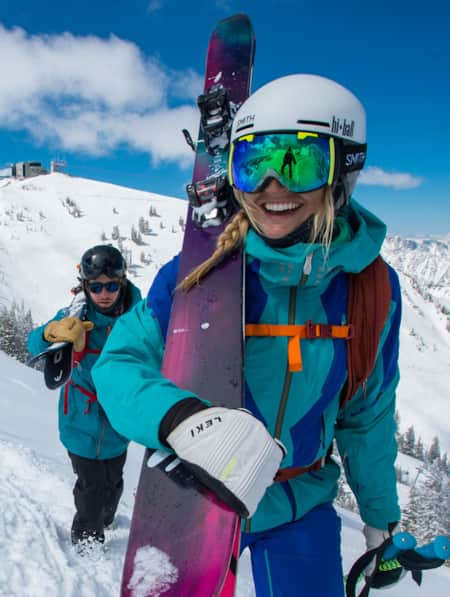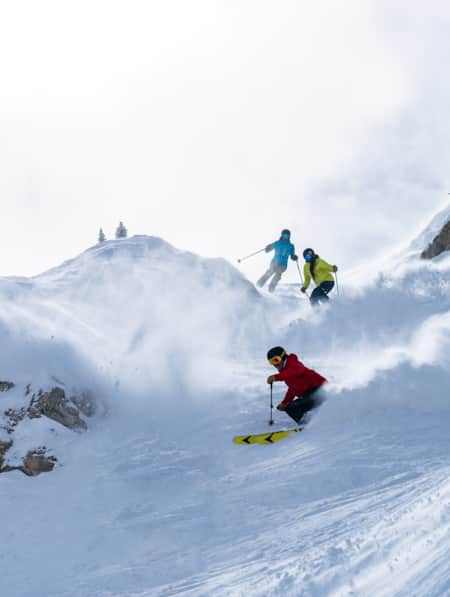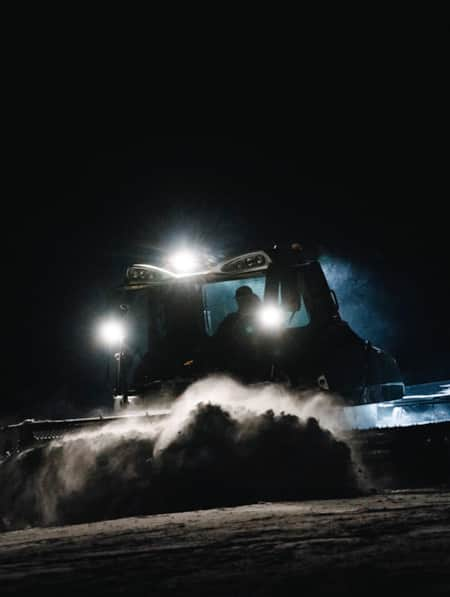The Ultimate Salt Lake City Budget Skiing Guide

Planning a ski vacation doesn't have to be a costly endeavor. Utah, renowned for The Greatest Snow on Earth®, offers exceptional skiing opportunities that cater to budget-conscious travelers, whether they seek an all-encompassing, on-the-cheap ski trip or wish to customize their ski vacation by spending more on some items, but less on others. With strategic planning, enjoy world-class resorts, affordable lift tickets, convenient gear rentals, accessible transportation and comfortable lodging — all within reach of Salt Lake City International Airport.

Photo: Adam Clark
Affordable Ski Resorts in Salt Lake
Find ten incredible ski resorts within an hour of Salt Lake City. Each resort has its unique draw and charm. Some are renowned for advanced, steep terrain, others for their welcoming local vibe — a few stand out for offering the iconic Utah skiing experience at a more affordable price. Here are a few resorts that provide exceptional value:
Brighton Ski Resort
Brighton offers a true ‘local’s mountain’ feel; it is a mountain that feels cozy and approachable in some areas and full-blown expert in others — offering up chutes, cliffs and steep bowls. Its cozy mountain feel is paired with affordability, offering free lift tickets for kids under age 6 with a paying adult. Brighton also stands out for its night skiing, where illuminated runs create a magical atmosphere under the stars. Night lift tickets or Twilight lift Tickets are significantly cheaper than daytime passes, making it a popular choice for those looking to enjoy the slopes on a budget. Brighton’s friendly environment and excellent value make it a go-to destination for those looking to save money.
Solitude Mountain Resort
Solitude Mountain Resort offers a serene and picturesque skiing experience. Nestled in Big Cottonwood Canyon, this resort lives up to its name, with often uncrowded runs and a peaceful ambiance. A Solitude lift ticket comes in at a lower price than luxurious ski resorts like Deer Valley or Snowbird. For cross-country enthusiasts, Solitude’s Nordic Center provides an inexpensive way to enjoy Utah’s natural beauty on miles of groomed trails via cross-country skis or snowshoes. Ideal for beginner, intermediate and expert skiers alike, Solitude combines value with a sense of tranquility that’s hard to find elsewhere.
Nordic Valley Ski Resort
Located near Ogden, Utah, Nordic Valley is a hidden gem for skiers seeking charm and affordability. This resort has a welcoming, family-friendly atmosphere that feels like a true local favorite. Its cozy lodge and intimate setting make it the perfect place to relax and enjoy the slopes. Nordic Valley may be smaller than many other Utah resorts, but it also will cost you less while still offering plenty to explore. The resort offers inexpensive night skiing, where you can carve turns under twinkling lights for a fraction of the cost of other resorts. With its budget-friendly pricing and inviting feel, Nordic Valley delivers an authentic ski experience that won’t break the bank.

Photo: Michael Kunde
Wallet-Friendly Lift Tickets, Passes and Rentals
Lift Tickets and Passes
Lift tickets can be a significant expense, but with smart planning, substantial savings are achievable. Buying lift tickets at the resort window is pricey. Going on the resort website beforehand can help you score a better deal.
The Ikon Pass grants access to multiple Utah resorts, including unlimited access to Solitude, and up to seven days each at Brighton, Deer Valley, Snowbasin and a combined seven days at Alta and Snowbird (Read: Making the Most of The Ikon Pass).
Families can tap into the exceptional value of the Ski Utah Passport, allowing fourth, fifth and sixth graders to ski three days at each of Utah's 15 resorts for just $89. Additionally, many ski resorts discount their lift tickets for those who buy in advance online. Keep an eye out for special deals, like Brighton’s ‘Chair-itable Wednesdays”, while planning your ski trip.
Gear Rentals: Cost-Effective and Convenient
Renting equipment is often the most economical choice, especially for infrequent skiers. Renting from a local shop in the valley is recommended, as they often offer lower prices than the on-site options at resorts. Shops like Ski 'N See offer daily rentals starting at $22 for children and $38 for adults, and other local stores such as Level Nine Sports and The Gear Room provide similarly priced rental options and heavily discounted, used gear. Reserving your gear online or in advance often yields additional discounts, so planning even 48 hours ahead can result in significant savings. (More Utah Ski Deals)
More Tips for Your Budget-Friendly Ski Trip:
Visit During Non-Peak Days: Prices for lift tickets, ski lessons, and lodging tend to rise during holiday periods, including Martin Luther King Jr. Day, Presidents Day weekends, and the stretch between Christmas and New Year's Day.
Book in Advance: The best way to save money skiing in Utah? Buy lift tickets, book ski lessons and reserve lodging well in advance. Savings come to those who plan ahead.
Travel Midweek for the Best Deals: Resorts are typically less crowded midweek, and prices for lodging and lift tickets are often lower. You’ll also enjoy shorter lift lines and quieter slopes.
Pack Your Meals: Resort dining can add up quickly. Packing your own lunch and snacks saves money and lets you avoid the crowds at busy resort eateries. Many resorts have picnic areas or base lodges where you can enjoy your homemade meals.
Look for Package Deals: Some travel operators and resorts offer ski vacation packages that bundle lift tickets, accommodations, and sometimes even meals at a discounted rate.
Plan Your Budget-Friendly Ski Adventure
With thoughtful planning, experience Utah's world-class skiing without overspending. By selecting the right resort, securing discounted lift tickets, renting gear smartly and utilizing affordable transportation and lodging. Whether chasing fresh powder at Alta, learning new tricks at Brighton, or soaking in the serene atmosphere at Solitude, Utah offers the perfect blend of affordability, adventure and unforgettable experiences. Now's the time to plan your trip and enjoy The Greatest Snow on Earth®!


























